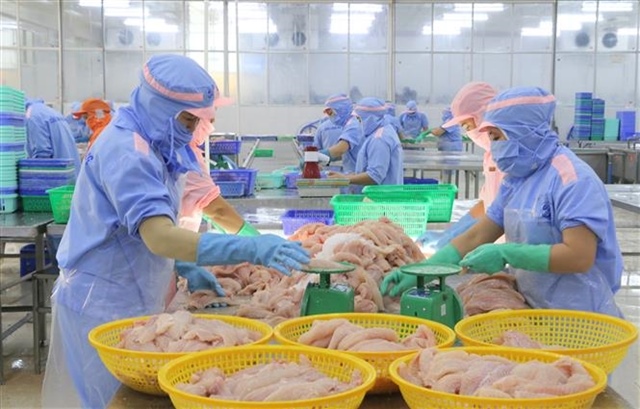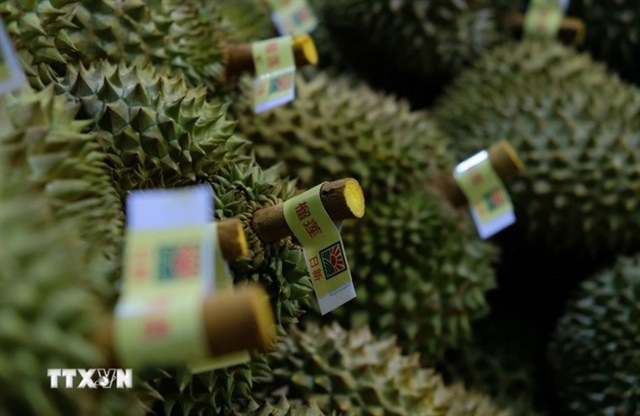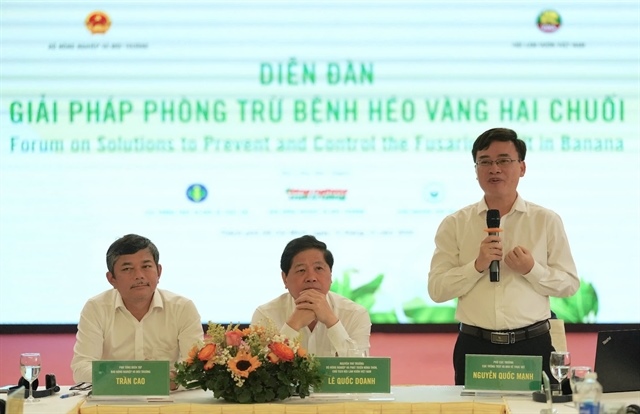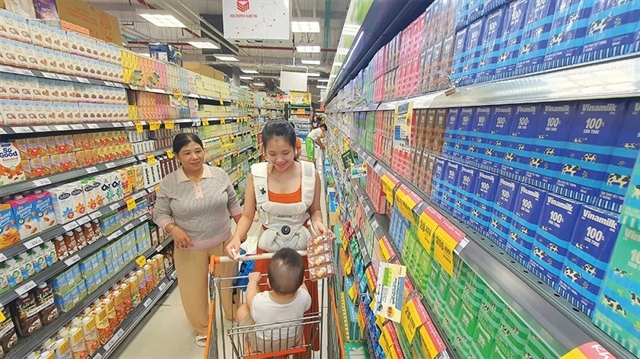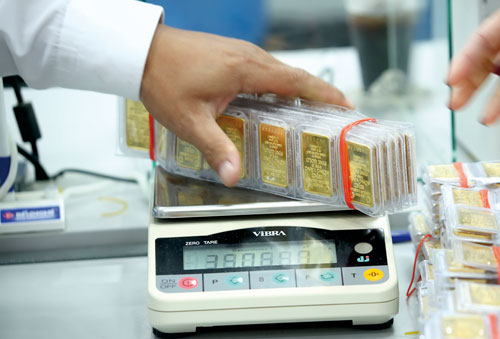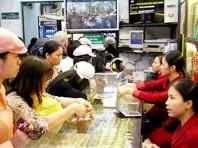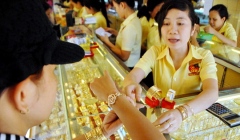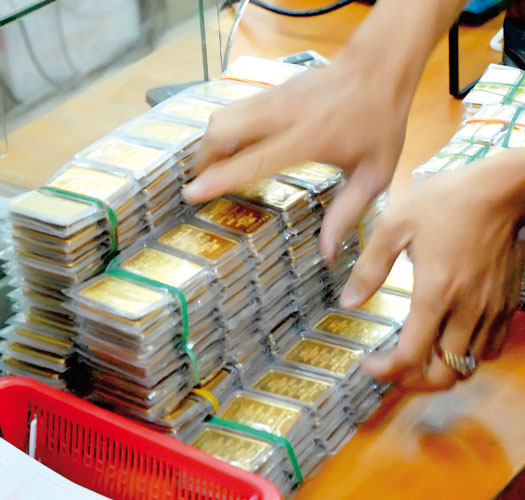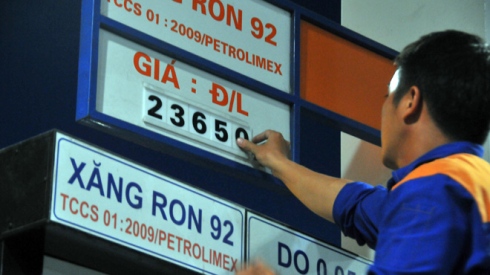Rice farmers pin hopes on regional cartel
Rice farmers pin hopes on regional cartel
Vietnamese farmers are looking forward to the establishment of a rice cartel by five ASEAN member countries, which could lead to a 10 per cent annual rise in the prices of the grain.
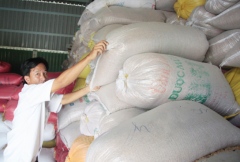
News about the ASEAN rice alliance began to spread in late August after Yanyong Phuangrach, Thailand's permanent commerce secretary, told a press briefing in Bangkok that trade ministers from Cambodia, Laos, Myanmar, Thailand and Viet Nam are scheduled to sign an agreement later this year to establish the ASEAN Rice Federation.
The five currently sold 20 million tonnes of rice a year, or two-thirds of the total global volume, he said.
Yanyong was quoted by the Thai English-language newspaper Bangkok Post on August 23 as saying co-operation would lift rice prices and that the five agreed that rice is not only a staple but also a major source of income for them.
He said a 10 per cent rise per year was acceptable and would not have a significant effect on consumers.
But Korbsook Iamsuri, president of the Thai Rice Exporters Association, questioned the wisdom of raising prices by 10 per cent, fearing a conflict of interest with ASEAN members such as Indonesia and the Philippines that are major customers.
"In her view, the federation would be better off focusing on production standards and environmentally friendly cultivation," the Bangkok Post said.
Dr Vo Tong Xuan, a well-known Vietnamese agriculturist and rector of Tan Tao University, who backed the establishment of an ASEAN rice cartel, said the 10 per cent increase was "reasonable".
"Prices of fuels, consumer goods and house rentals are on the rise. Therefore, without rice price hikes, farmers will be at a big disadvantage," Xuan said.
The proposed alliance would also enable paddy prices to be clearly and transparently, he said.
"Such transparency will help prevent rice traders from forcing paddy prices down."
The five would-be members included the world's two biggest rice exporters, Thailand and Viet Nam. But Laos had to import rice to feed its people while Cambodia and Myanmar had a little rice for export, he said.
Thailand is expected to ship 6.5 million tonnes this year, and Viet Nam, 7.2 million tonnes, according to the Viet Nam Food Association.
"It will be best if the governments of Thailand and Viet Nam can establish an alliance that can help their farmers get the best prices," Xuan said.
Adriano Lourdes, an economist at the Manila-based Asian Development Bank, said the ASEAN Rice Cartel would be unfeasible in the long term because of competition between member countries, the Oryza News reported on September 6.
She opined that a rice cartel based on the lines of OPEC might be suitable for rice exporters in the short term, but the model was unworkable in the long term because each member would want to export more than the other.
Attempts to form a rice cartel in the past had failed, she said.
The Thai Rice Exporters Association said it was impossible to set up a cartel for rice exports in the region due to differences in logistics and storage capacities among the members.
Tra farmers await $440m
Tra fish processors and farmers lament about lack of funds, with a financial package of VND9 trillion (US$440 million) for the sector approved by the Government in August still remains on paper.
News of the package pushed tra fish prices up by VND4,000 per kilogramme to VND22,000 – VND22,500 from VND20,000 – VND20,500 in mid-August.
But the money remains out of reach to many tra farmers in the Cuu Long (Mekong) Delta who need funds to buy feed and fry – for breeding – and expand their business.
Tran Van Kiet, a tra fish breeder in An Giang Province's Phu Tan District who has a 1ha farm, said he needed money to buy feed for his fish, which weigh 0.5-0.7kg each.
"I have heard of the Government's financial package to support tra fish farmers, but cannot get access to it. To survive, I decided to feed my fish with feed we produce ourselves."
Vo Van Thanh, a farmer in An Nhon Commune in Dong Thap Province's Chau Thanh District, said even after recent price hikes tra fish is selling at less than production cost.
At current prices of VND22,000-22,500 per kilogramme, Mekong farmers are incurring losses of VND2,000-4,000.
As a result, many of them use only a part of their farms. According to the Dong Thap Department of Agriculture and Rural Development, more than 80ha of farms in the province remain unused since farmers are waiting to draw from the package.
The Viet Nam Association of Seafood Exporters and Processors said borrowers have to undergo "strict" approval procedures for loans from the financial package.
Duong Ngoc Minh, deputy chairman of VASEP, said four-month loans would be given by banks to farmers and processors at 11.4 per cent interest.
In the current stagnant tra market only those facing huge difficulties would accept such "unfavourable" conditions for the loans, he said.
Mai Thi Anh Tuyet, director of the An Giang Department of Industry and Trade, told Viet Nam News: "Assistance is needed for tra farmers and processing enterprises. Without it, the Cuu Long (Mekong) Delta's tra fish industry will suffer huge losses."
The loans should be provided to farmers and processors as soon as possible, she said.
But banks should not demand collateral for these loans since the farmers and processors had mortgaged most of their assets to banks for earlier loans, she said.
The financial package is necessary to save the tra fish industry which is expected to fetch export earnings of $2 billion this year.
According to VASEP, tra exports to the US are up 35 per cent this year, while exports to the EU have fallen sharply.
Shipments to the US have been worth $235 million. The US is the largest buyer of Vietnamese tra, with a share of 22 per cent.
VASEP deputy chairman Duong Ngoc Minh said firms increased exports to the US after demand in the EU fell sharply.
The US's catfish production has fallen, according to the country's Department of Agriculture, which reported the volume of fish processed in July was around 11,200 tonnes, down 6 per cent year-on-year.
vietnamnews


